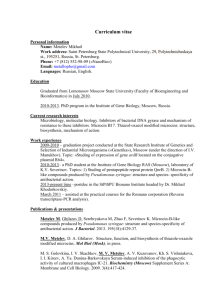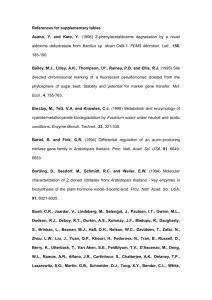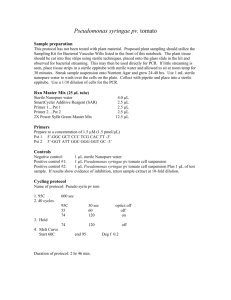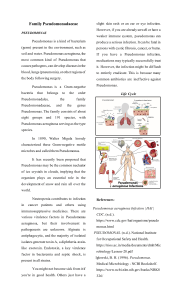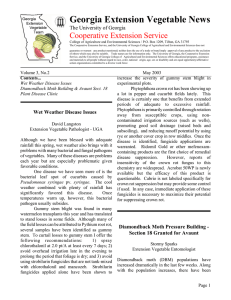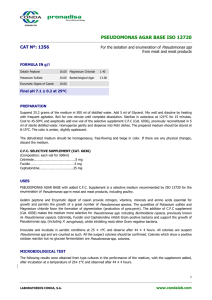here
advertisement
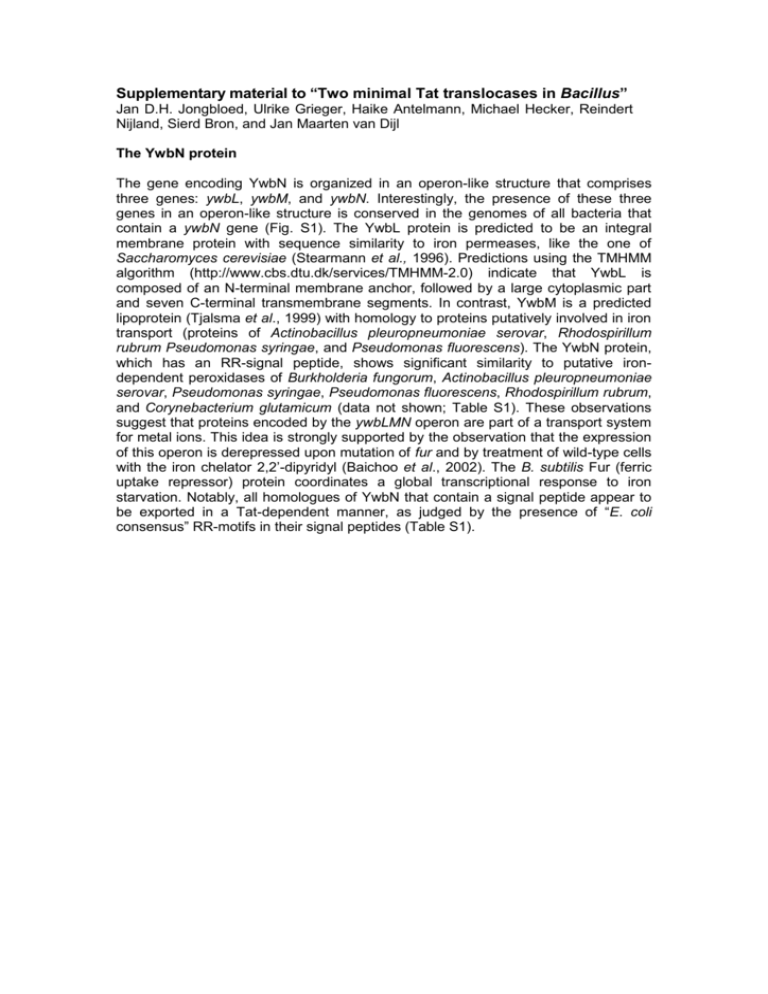
Supplementary material to “Two minimal Tat translocases in Bacillus” Jan D.H. Jongbloed, Ulrike Grieger, Haike Antelmann, Michael Hecker, Reindert Nijland, Sierd Bron, and Jan Maarten van Dijl The YwbN protein The gene encoding YwbN is organized in an operon-like structure that comprises three genes: ywbL, ywbM, and ywbN. Interestingly, the presence of these three genes in an operon-like structure is conserved in the genomes of all bacteria that contain a ywbN gene (Fig. S1). The YwbL protein is predicted to be an integral membrane protein with sequence similarity to iron permeases, like the one of Saccharomyces cerevisiae (Stearmann et al., 1996). Predictions using the TMHMM algorithm (http://www.cbs.dtu.dk/services/TMHMM-2.0) indicate that YwbL is composed of an N-terminal membrane anchor, followed by a large cytoplasmic part and seven C-terminal transmembrane segments. In contrast, YwbM is a predicted lipoprotein (Tjalsma et al., 1999) with homology to proteins putatively involved in iron transport (proteins of Actinobacillus pleuropneumoniae serovar, Rhodospirillum rubrum Pseudomonas syringae, and Pseudomonas fluorescens). The YwbN protein, which has an RR-signal peptide, shows significant similarity to putative irondependent peroxidases of Burkholderia fungorum, Actinobacillus pleuropneumoniae serovar, Pseudomonas syringae, Pseudomonas fluorescens, Rhodospirillum rubrum, and Corynebacterium glutamicum (data not shown; Table S1). These observations suggest that proteins encoded by the ywbLMN operon are part of a transport system for metal ions. This idea is strongly supported by the observation that the expression of this operon is derepressed upon mutation of fur and by treatment of wild-type cells with the iron chelator 2,2’-dipyridyl (Baichoo et al., 2002). The B. subtilis Fur (ferric uptake repressor) protein coordinates a global transcriptional response to iron starvation. Notably, all homologues of YwbN that contain a signal peptide appear to be exported in a Tat-dependent manner, as judged by the presence of “E. coli consensus” RR-motifs in their signal peptides (Table S1).
